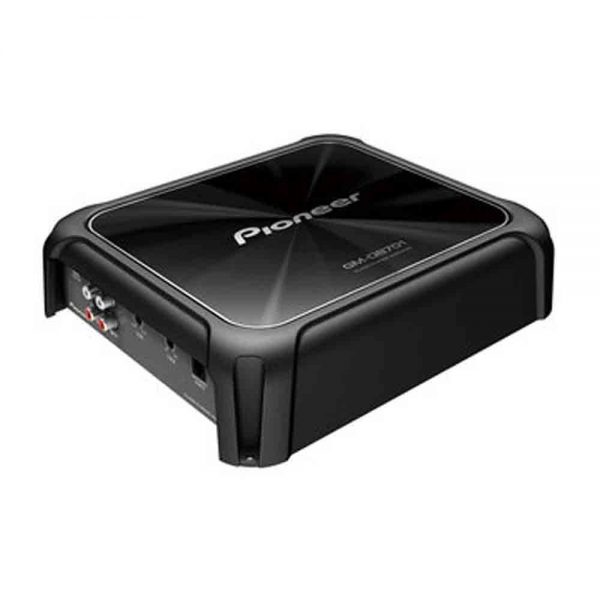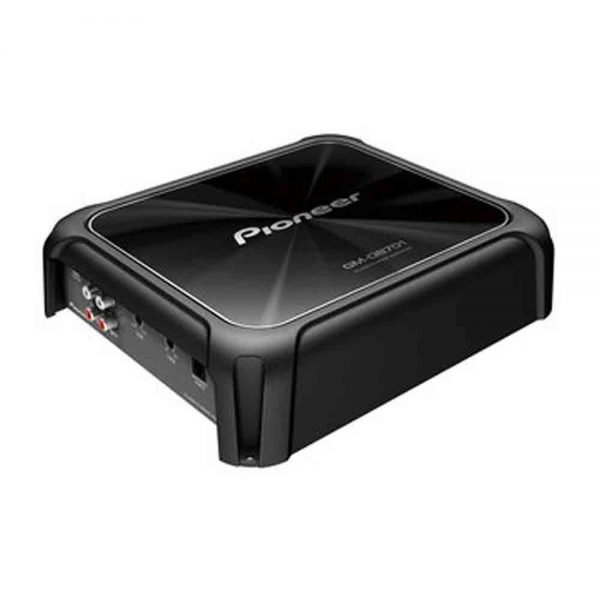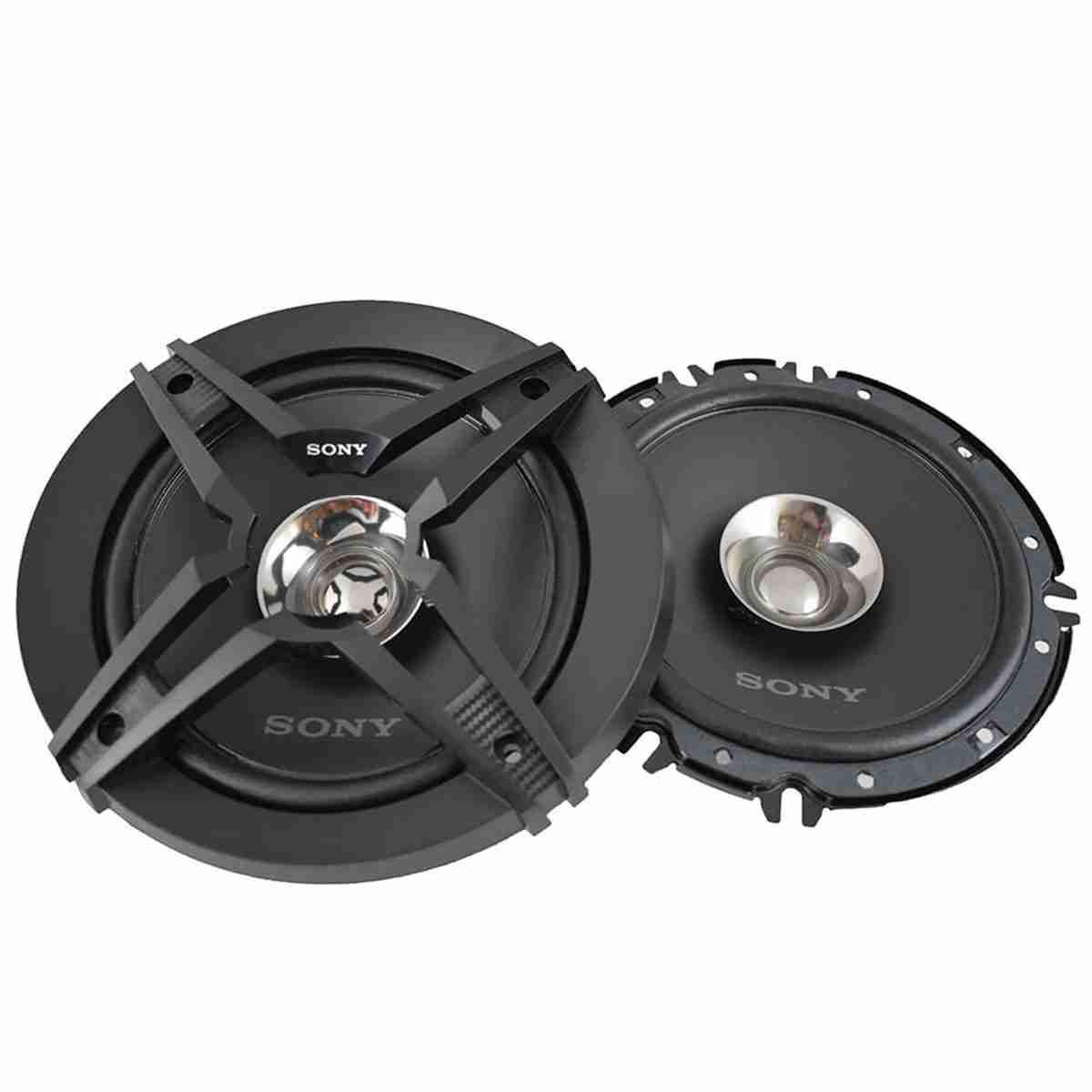Features
Introducing the Pioneer GM-D9705 Class-D 5-Channel Amplifier with Wired Bass Boost Remote – a compact yet powerful all-in-one solution designed to deliver remarkable sound without compromising on space. This versatile amplifier is well-suited for a range of vehicles, including compact cars and pick-up trucks with limited space, offering installation flexibility for various applications.
The 5-channel amplifier with a Wired Bass Boost Remote boasts an impressive 2000 watts max power. The A and B channels are rated at 75 watts x 4 (RMS), while the subwoofer output is rated at 600 watts at 2 (RMS). In comparison to similarly priced multichannel amplifiers, the GM-D9705 stands out with its variable crossover networks, providing increased flexibility and greater control to listeners. The inclusion of block terminals ensures a cleaner installation, with direct wire contact minimizing resistance.
For added flexibility, the variable Low Pass Filter (LPF) allows users to adjust the audio frequency according to subwoofer characteristics and personal listening preferences. The GM-D9705's LPF is adjustable within the range of 40 Hz to 240 Hz. Additionally, the amplifier features a Bass Boost Remote, enabling optimal bass level adjustment based on individual listening preferences and music characteristics.
Even if you don't own a Pioneer head unit, the GM-D9705 makes system expansion easy. Speaker-level inputs simplify integration into existing aftermarket or factory-installed (OEM) integrated entertainment systems. This means you can connect your OEM unit or any unit lacking typical RCA-type inputs without the need for additional adapters. This streamlined installation process not only saves time but also money, ensuring you have a Pioneer amplifier enhancing your vehicle's audio system.
Product Specification:
- 5 Channel Champion Series Class D Amplifier w/ Wired Bass Boost Remote
- Max Power Rating:
- 4 ohms: 150 watts x 4 chan. + 700 watts x 1 chan.
- 2 ohms: 200 watts x 4 chan. + 1200 watts x 1 chan.
- Bridged, 4 ohms: 400 watts x 2 chan.
- RMS Power Rating:
- 4 ohms: 75 watts x 4 chan. + 350 watts x 1 chan.
- 2 ohms: 100 watts x 4 chan. + 600 watts x 1 chan.
- Bridged, 4 ohms: 200 watts x 2 chan.
- Total power output: 2000 watts Max
- CEA-2006 Compliant Amplifier
- Pulse Width Modulated MOSFET power supply
- Wired remote bass boost level control included
- LED power (green) and protect (red) indicators
- Soft start turn-on
- Speaker-level (high-level) inputs
- 5, 4 or 3 channel operation
- Dedicated, large-block subwoofer terminal output
- Nickle-plated RCA, Speaker and Power/Ground Terminals
- Selectable input modes:
- Front two channels (RCA Only) can provide signal to remaining channels
- Four channel High-Level connection can provide signal to Subwoofer channel
- 3-way protection circuitry (thermal, overload, and speaker short protection)
- Heavy duty aluminum alloy heat-sink for extreme heat dissipation
- Input sensitivity:
- Low level: 200mV – 6.5V
- High level: 800mV – 16V
- A/B Channel Frequency Response: 10 – 50,000 Hz (+0dB, -3dB)
- Sub-Channel Frequency Response: 10 – 500 Hz (+0dB, -3dB)
- Total Harmonic Distortion (THD): 0.05%
- Signal to Noise Ration: 94 dB
- Selectable crossover filter (Ch 1 – 4): LPF / OFF / HPF
- Variable crossover filter (Ch 1 – 4): 40 – 500 Hz, 12 dB/octave
- Variable low-pass filter (Sub): 40 – 500 Hz, 24 or 12 dB/octave
- Variable Bass Boost (Via Remote): 0 to +18 dB bass boost at 50 Hz
- Fuse Rating: 30A x 3
- 8 – 16 Gauge speaker terminal outputs
- 4 gauge power and ground wiring is recommended for installation.




Sed pretium, ligula sollicitudin laoreet viverra, tortor libero sodales leo, eget blandit nunc tortor eu nibh. Nullam mollis. Ut justo. Suspendisse potenti. Sed egestas, ante et vulputate volutpat, eros pede semper est, vitae luctus metus libero eu augue.
Sed pretium, ligula sollicitudin laoreet viverra, tortor libero sodales leo, eget blandit nunc tortor eu nibh. Nullam mollis. Ut justo. Suspendisse potenti. Sed egestas, ante et vulputate volutpat, eros pede semper est, vitae luctus metus libero eu augue. Morbi purus libero, faucibus adipiscing, commodo quis, avida id, est. Sed lectus. Praesent elementum hendrerit tortor. Sed semper lorem at felis. Vestibulum volutpat.